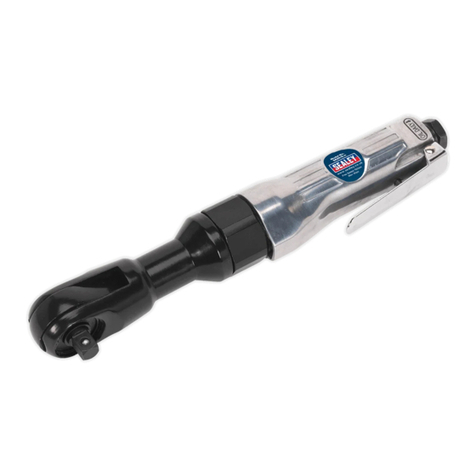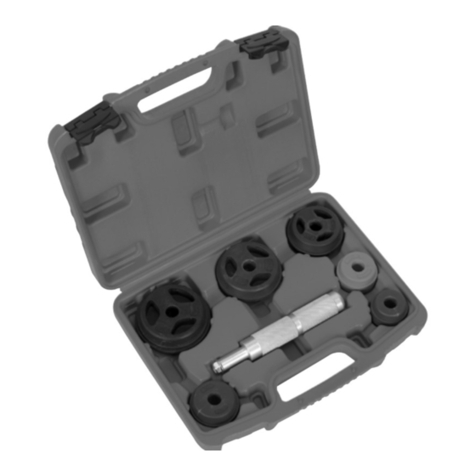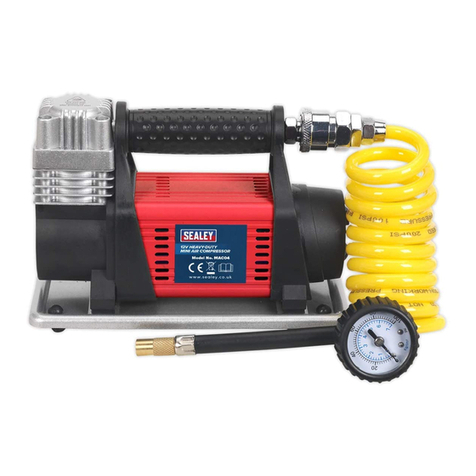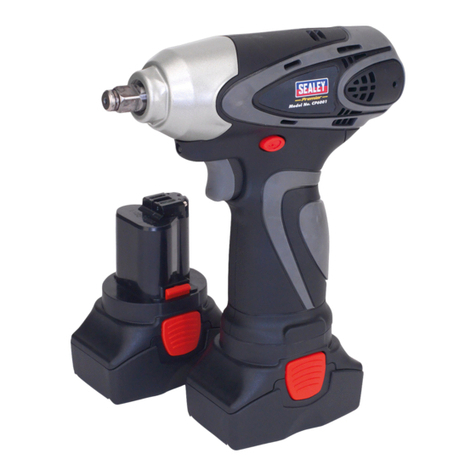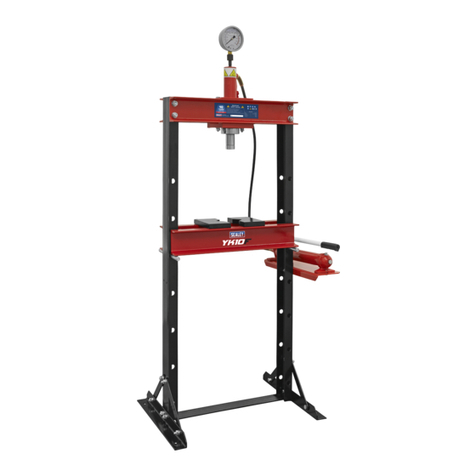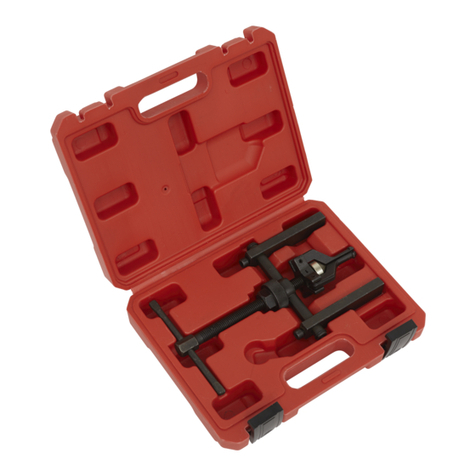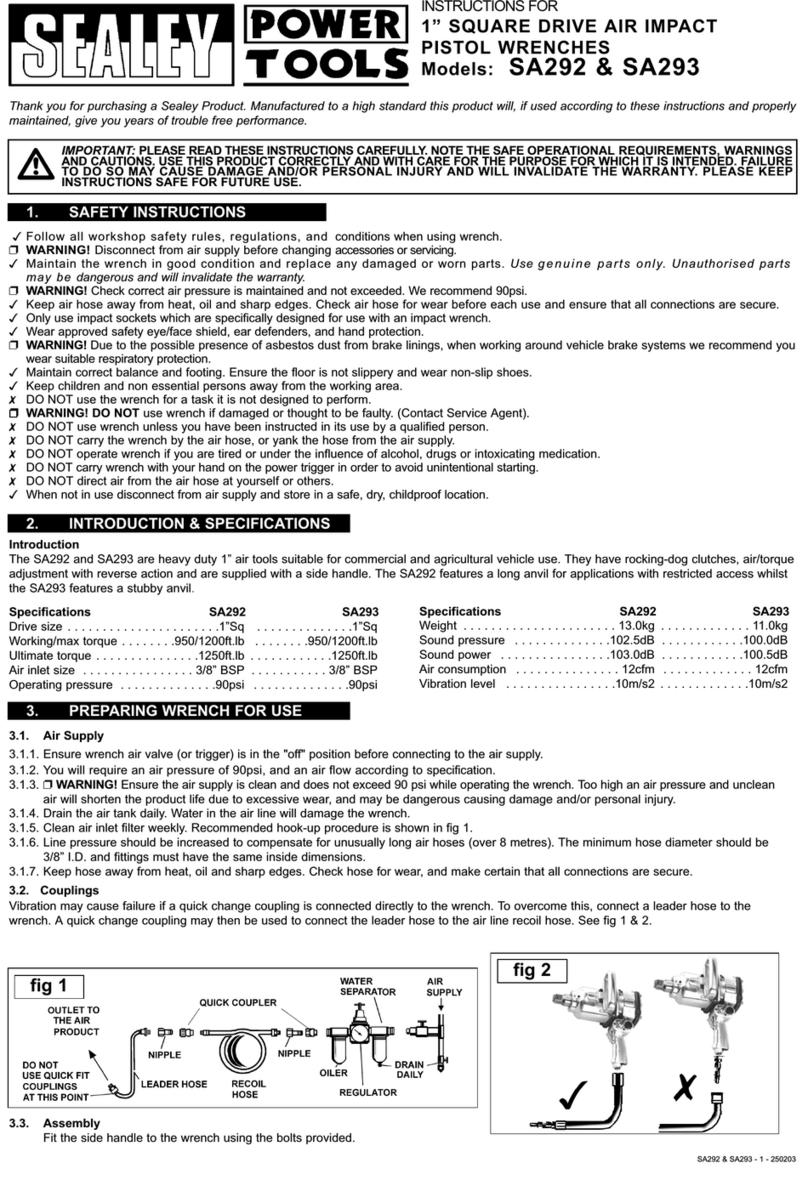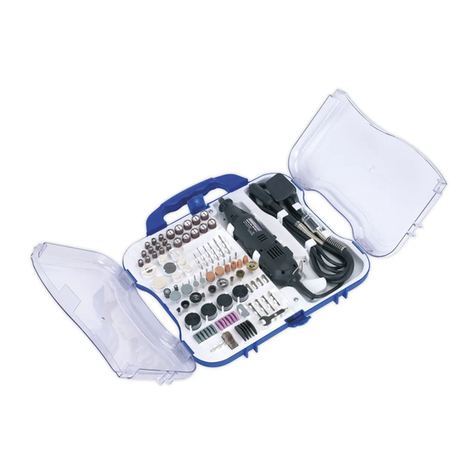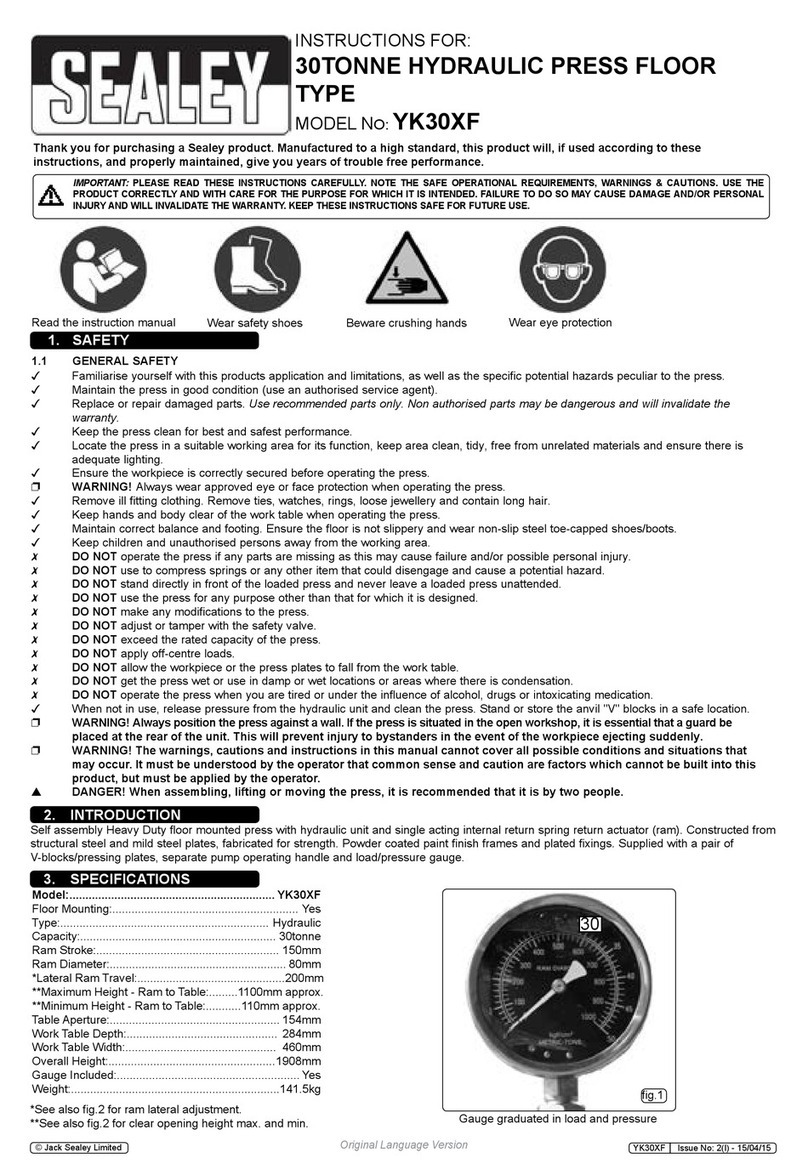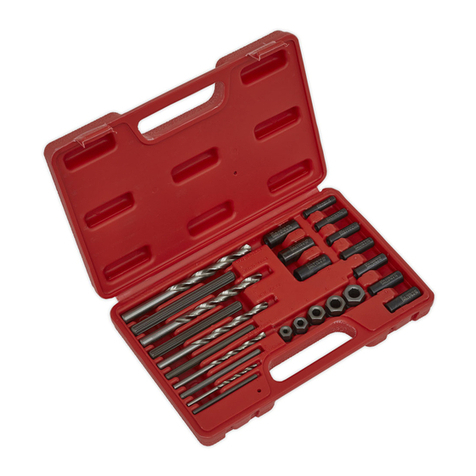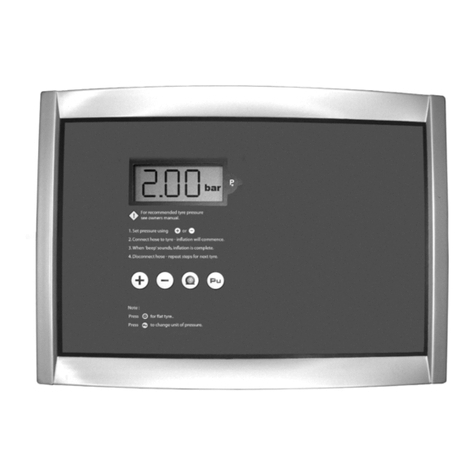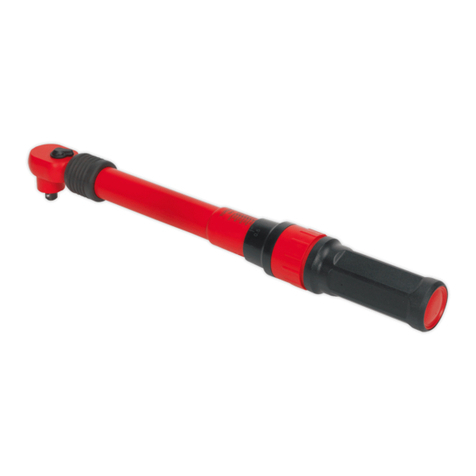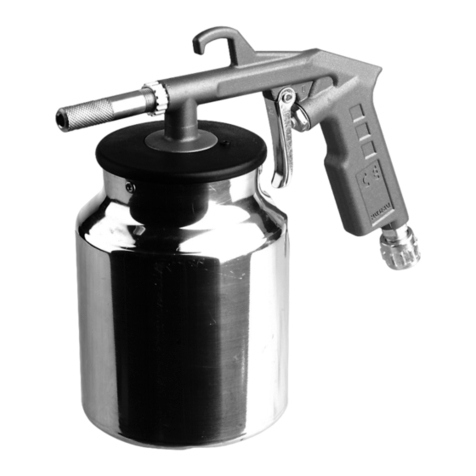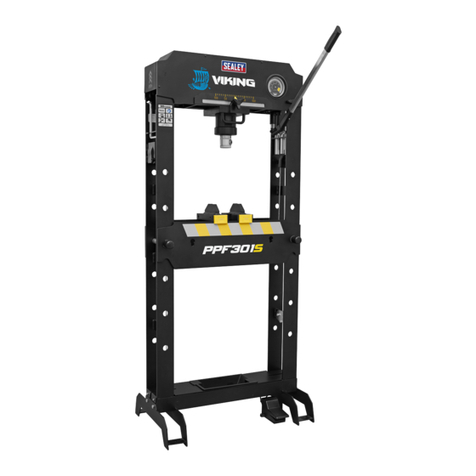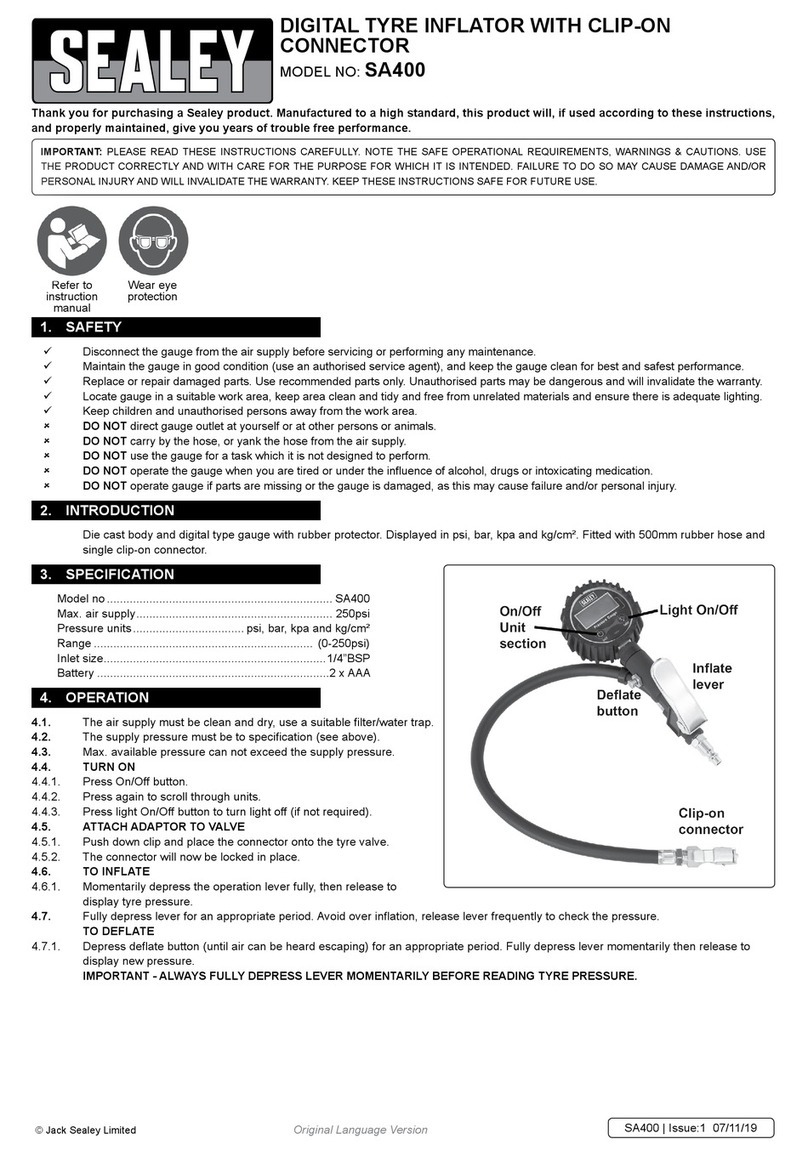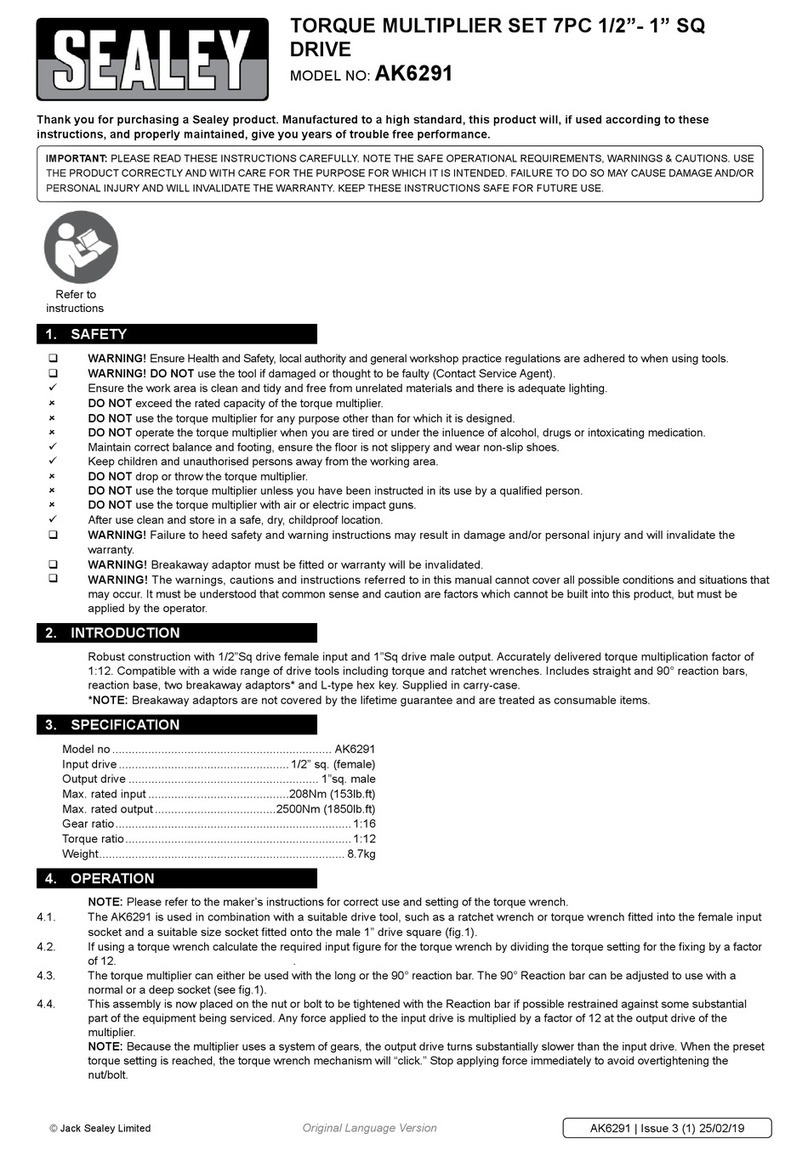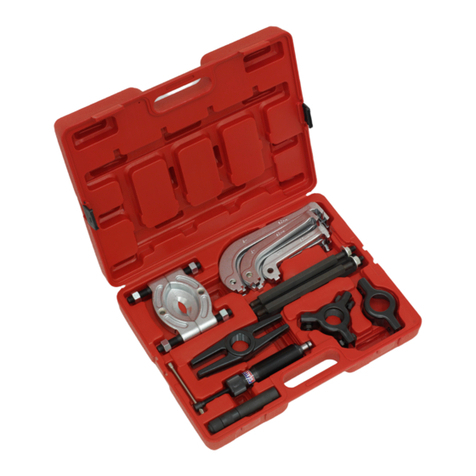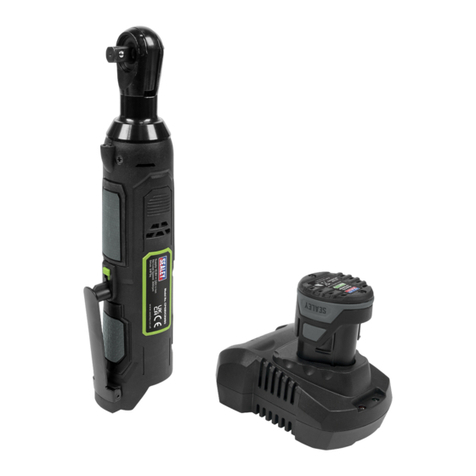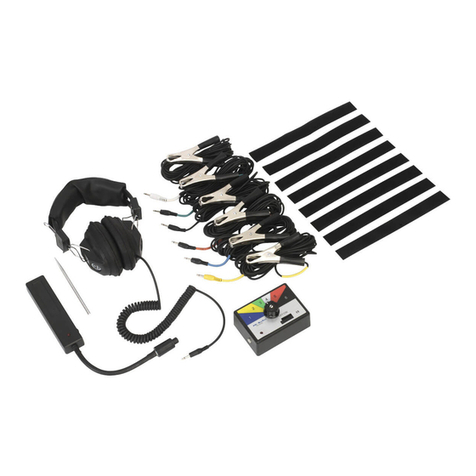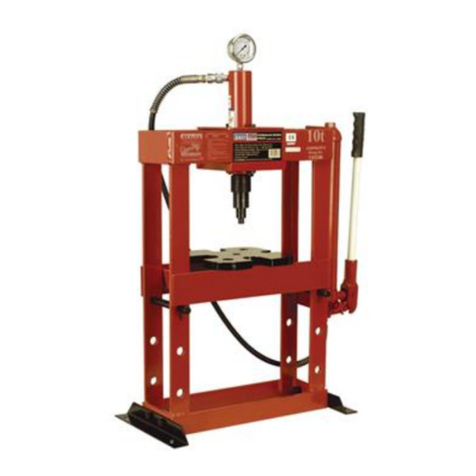
1.2 GENERAL SAFETY
pWARNING! Ensure health & safety, government and local authority regulations relating to the the use of shot blasting are adhered to when
using this equipment. Familiarise yourself with cabinet application and limitations, and specific potential hazards peculiar to the cabinet.
pWARNING! Disconnect cabinet from mains power, and air supply before changing accessories, servicing or performing any maintenance.
3Maintain the cabinet in good condition Replace or repair damaged parts. Use genuine parts only. Non authorised parts may be dangerous
and will invalidate the warranty.
3Locate cabinet in an adequate working area for its function, keep area clean, tidy and free from unrelated materials. Ensure adequate lighting.
3IMPORTANT: Use only dry abrasives such as glass bead. We recommend Sealey item B5KG. Never use harsh abrasives
such as aluminium oxide, blasting garnet or sand with cabinet. Never use fluids or mix fluids with another media in unit.
pWARNING! Always wear approved eye or face and ear protection when operating the cabinet.
3Remove ill fitting clothing. Remove ties, watches, rings, and other loose jewellery, and contain and/ or tie back long hair.
3Keep the side door closed and secured when in use.
pWARNING! ensure correct air pressure is maintained and not exceeded.
Always keep blast nozzle directed at the workpiece. DO NOT aim blast at gloves, glove fingers or internal light. Never use outside the unit.
Regularly check that the exhaust vent at the back of the cabinet is clear and not blocked and there is space between it and any wall.
3Maintain correct balance and footing. Ensure the floor is clean and free from blasting grit spillage. Wear non slip shoes.
3Keep children and non essential persons away from the working area.
7DO NOT use the cabinet to achieve a task it was not designed to perform.
7DO NOT operate the cabinet if any parts are damaged or missing as this may cause failure or possible personal injury.
7DO NOT operate the cabinet with the a side door open.
7DO NOT use the gun without appropriate nozzles fitted.
7DO NOT stand on the cabinet.
7DO NOT get the cabinet wet or use in damp or wet locations or areas where there is condensation.
7DO NOT operate the cabinet when you are tired, under the influence of alcohol, drugs or intoxicating medication.
7DO NOT leave the cabinet operating whilst unattended.
3The viewing screen is 5mm tempered glass. If glass should break ensure replacement with tempered or safety glass only.
3When not in use disconnect from the electrical mains and the air power supply.
SB973 - 0016 - (1) - 010700
1. SAFETY INSTRUCTIONS
IMPORTANT: PLEASE READ THESE INSTRUCTIONS CAREFULLY. NOTE THE SAFE OPERATIONAL REQUIREMENTS, WARNINGS & CAUTIONS.
USE THE PRODUCT CORRECTLY AND WITH CARE FOR THE PURPOSE FOR WHICH IT IS INTENDED. FAILURE TO DO SO MAY CAUSE
DAMAGE OR PERSONAL INJURY, AND WILL INVALIDATE THE WARRANTY. PLEASE KEEP INSTRUCTIONS SAFE FOR FUTURE USE.
Thank you for purchasing a Sealey product. Manufactured to a high standard this product will, if used according to these instructions
and properly maintained, give you years of trouble free performance.
INSTRUCTIONS FOR:
SHOT BLASTING CABINET
Model: SB973
1.1. ELECTRICAL SAFETY.
ONLY USE THE SUPPLIED TRANSFORMER PLUG FOR CONNECTING UNIT TO THE MAIN ELECTRICAL POWER SUPPLY.
p WARNING! It is the users responsibility to read, understand and comply with the following electrical instructions:
You must ensure the risk of electric shock is minimised by the installation of appropriate safety devices. An RCCB (Residual Current Circuit
Breaker) should be incorporated in the main distribution board. We also recommend that an RCD (Residual Current Device) is used with all
electrical products, particularly portable equipment which is plugged into an electrical supply not protected by an RCCB.
You must also read and understand the following instructions concerning electrical safety.
1.1.1. The Electricity At Work Act 1989 requires all portable electrical appliances, if used on business premises, to be tested by
a qualified electrician, using a Portable Appliance Tester (PAT), at least once a year.
1.1.2. The Health & Safety at Work Act 1974 makes owners of electrical appliances responsible for the safe condition of the appliance,
and the safety of the appliance operator. If in any doubt about electrical safety, contact a qualified electrician.
1.1.3. You must ensure that you:
3Inspect the transformer plug, cable, adaptor for wear and damage to ensure items are safe before connecting to the mains power supply.
If worn or damaged DO NOT use, immediately replace with an appropriate adaptor, or contact a qualified electrician.
3Check cables are always protected against short circuit and overload.
3Important: Check that the voltage marked on the transformer plug is the same as the power supply to be used.
3Uncoil the power cable between the transformer and the powered product.
7DO NOT pull transformer power lead, or pull the transformer plug from the mains socket by the power lead.
7DO NOT use any other type of transformer with this product.
7DO NOT place the power connector into any area of the product except the correct inlet socket.
7DO NOT try to open or dis-assemble the transformer plug.
7DO NOT use the transformer plug to power any other electrical item.
7DO NOT get the transformer wet, or use in wet, damp conditions (for indoor use only).
pWARNING! NEVER substitute a standard 13Amp 3 pin plug, or any other type of plug, for the transformer plug .
Cable extension reels. When a cable extension reel is used it should be fully unwound before connection. A cable reel with an RCD fitted is
recommended since any product which is plugged into the cable reel will be protected. The section of the cable on the cable reel is important.
We recommend that at least 1.5mm2section cable but to be absolutely sure that the capacity of the cable reel is suitable for this product and
for others that may be used in the other output sockets, we recommend the use of 2.5mm2section cable.
